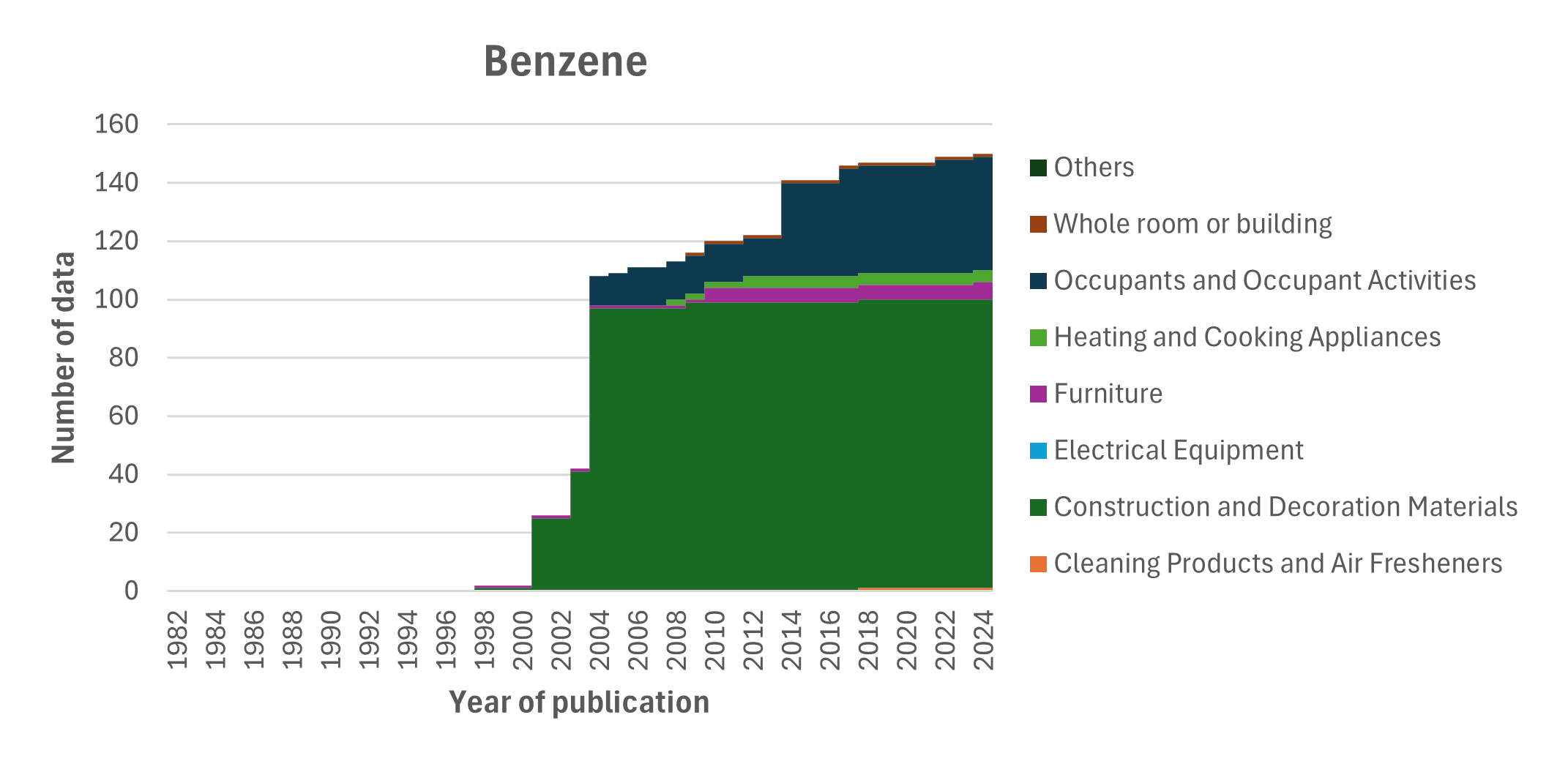Overview of the data implemented in PANDORA
The following graphs present the nature of the data implemented in PANDORA: almost 10,000 emission rates (ER) from literature have been integrated so far. The first studies presenting ER of pollutant have been published in 1982 and concerned emissions from Construction and Decoration Materials. 2003 is a pivotal year with the publication of several reports from American and European projects on materials' emission of VOCs. Studies reporting emission rates from Cleaning Products, Air Fresheners and Occupants' Activities have been published since 2013.
Currently, about 65% of the ER implemented in the database are related to the Construction and Decoration Materials, 16% to Cleaning Products and 12% to Occupants and Occupants' Activities.


A total of about 3,000 pollutants is found in the database linked to at least one ER. Formaldehyde is the most cited pollutant with 336 ER, followed by TVOC (311), Particle (173) and Benzene (150).

Particles are expressed in terms of PM2.5, PM10 or size intervals. The main sources available in PANDORA are Occupants' Activities and Heating and Cooking Appliances.

Formaldehyde emissions have been investigated in the literature for all categories of sources, for Construction and Decoration Materials, Cleaning Products and Air Fresheners and Occupants' Activities.

Most of the emission rates for Benzene come from Construction and Decoration Materials and Occupants' Activities.

TVOC have been mainly investigated for Construction and Decoration Materials and Electrical Equipment (mostly printers and photocopiers).


